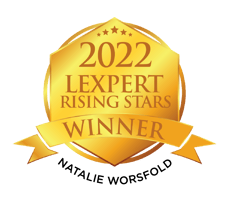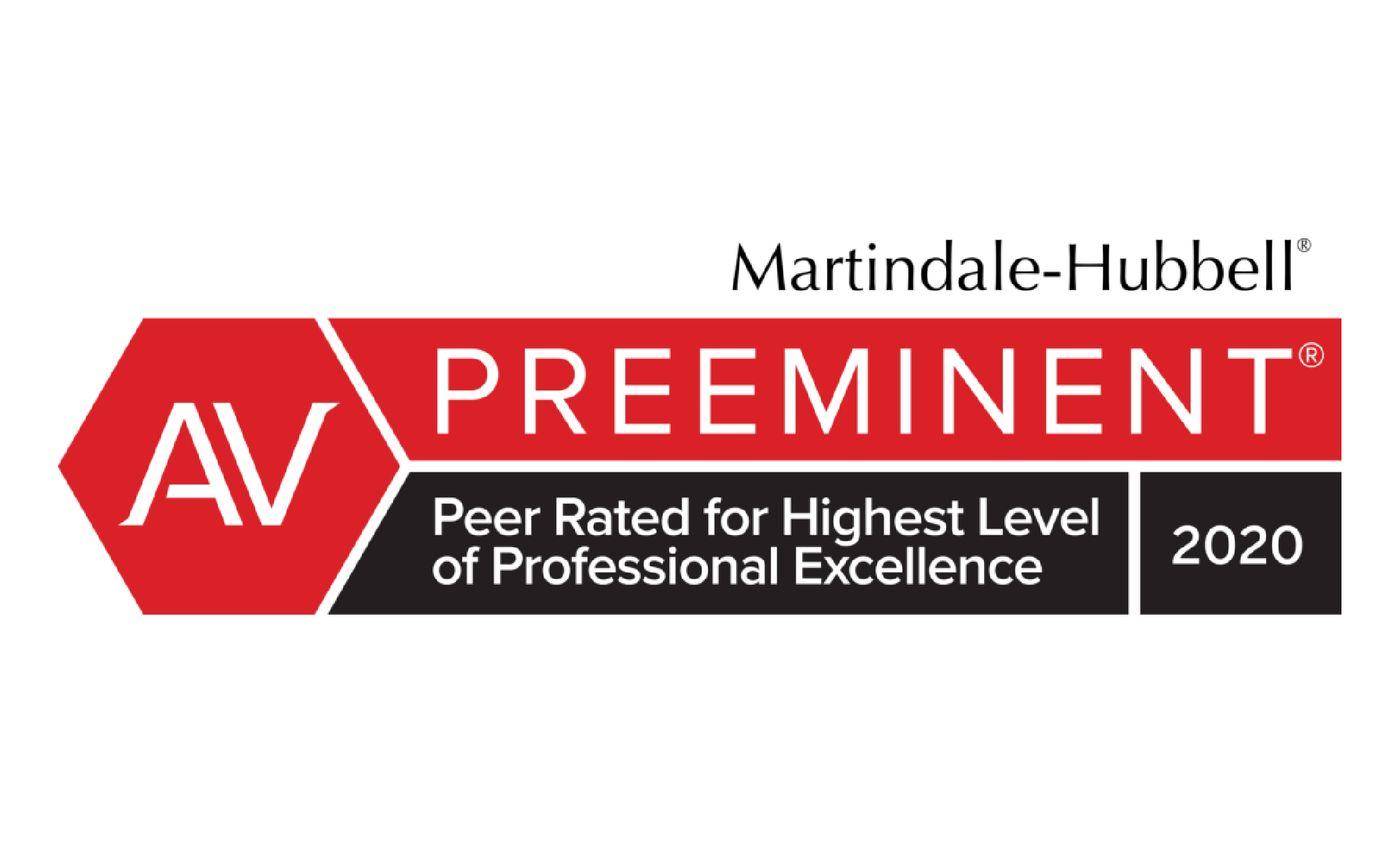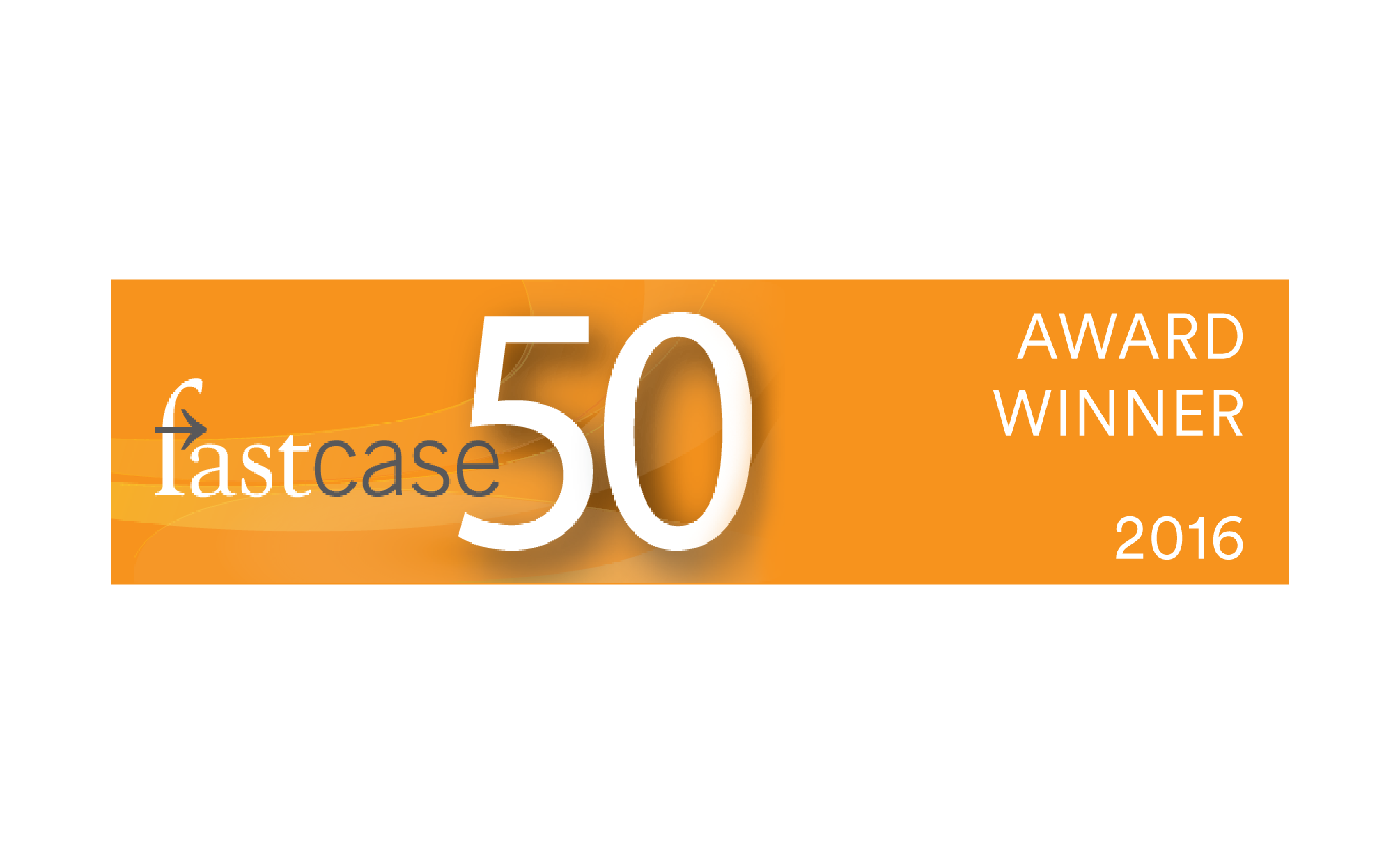
Peter Aprile and Natalie Worsfold interview Ken Grady, Lean Law Evangelist at Seyfarth Shaw LLP and professor at the Michigan State University College of Law.
Data has become the fundamental unit for doing business, and, according to Ken, it is starting the become the fundamental unit for doing law. As a Lean Law thinker, Ken believes that data management is integral for successful law firms. He argues that law firms need to start collecting data now to be competitive in the future.
Peter, Natalie, and Ken dig deep in what data management is, why it is important, and what tools are available to start collecting data. Ken explains the opportunities available to law firms once the data has been collected and cleaned, from providing data-driven answers to client questions to drafting better submissions, faster and more accurately.

Ken Grady is the Lean Law Evangelist for Seyfarth Shaw LLP, and formerly was Chief Executive Officer of SeyfarthLean® Consulting, LLC, a Seyfarth Shaw subsidiary.
A recognized thought leader, Ken is a frequent speaker in and outside the U.S. on legal industry issues and trends, including innovation, leadership, efficiency, and change management. Ken’s articles and posts have been featured in many online and print media publications, and he is the editor of the blog SeytLines.com. He has also earned a number of accolades during his career, including being named to the Fastcase 50, which honors the law’s “smartest, most courageous innovators, techies, visionaries, and leaders” and was honored by the Financial Times for innovative leadership of in-house counsel/outside counsel relationships.
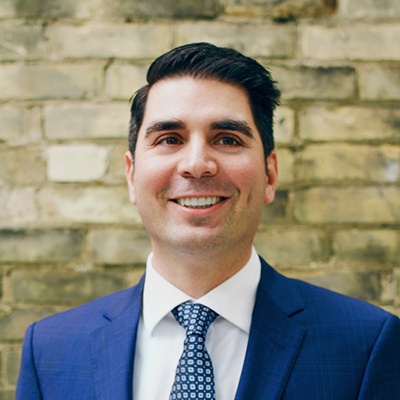
Peter Aprile is a senior lawyer specializing in tax dispute resolution and litigation. His vision as Counter’s founder and his everyday role at the firm are one and the same: to be an agent of change, uncovering opportunities and developing strategies that achieve more than anyone expected. A creative thinker, Peter studies problems from all different angles to find what others have missed. He’s also convinced that he likes winning more than most people.
Different people describe Peter in different ways. At the CRA and the federal Department of Justice, the word relentless comes up quite a lot. Admittedly, so does the word a**hole – but it’s often said with a certain grudging respect, if not affection. Peter’s clients call him a saint. Well, some of them, anyway. His colleagues describe him as empowering and harddriving, but fair. Peter’s friends call him loyal. His wife describes him as a lot to deal with, but worth it. Peter encourages his young daughter and son to call him “The Big Homie,” though with limited success. His mother describes him with the single word mischievous – before going on to complain that he should call more.

Natalie is a tax lawyer who represents individual taxpayers and owner-managed businesses in disputes with the Canada Revenue Agency (CRA). She also successfully challenges CRA decisions denying taxpayer relief and helps facilitate applications under the Voluntary Disclosures Program.
But what you really need to know about Natalie is that she’s a tax litigator with heart. When she takes a case, it’s not out of technical interest – it’s because she cares. And if she believes the government has got something wrong, she won’t stop until it’s been put right. She’s fierce.
Natalie is the co-architect behind many of Counter’s process workflows, software and data analytics systems, as well as our comprehensive knowledgebase (loving named Hank). And when it comes to preparing cases, she’s Counter’s secret weapon – happiest when elbow-deep in evidence, meticulously building creative solutions to seemingly impossible problems. Because the fact is Natalie sees things that other people don’t.
Natalie’s family and friends describe her as loyal, selfless, understanding and fun. They also mention stubborn. To her Counter colleagues she’s a combination of stellar brainpower and contagious enthusiasm who elevates the game of everyone around her.
Practices
Tech, Tools & More
- Digital Curation Centre
- Lawyerist
- Lean Six Sigma
- MIT Library
- SeyfarthLean
- SyntaxNet
- TBD Law
- TensorFlow
#LegalLean at MaRS: Ken Grady - The Seyfarth Lean Journey
[music]
Peter Aprile: [00:08] Hi, and welcome to Building NewLaw. Canada’s first, and only, CPD accredited podcast. It’s hosted by me, Peter Aprile, and my colleague, Natalie Worsfold.
Natalie Worsfold: [00:18] In each episode, we interview lawyers, legal technologists, and other like-minded people at the forefront of NewLaw.
Peter: [00:25] We hope that the podcast connects the NewLaw community and helps us all learn more about the approaches that are changing the way that we practice law.
Natalie: [00:30] To learn how you can use this podcast to satisfy your law society’s CPD requirements, visit our website at countertax.ca/bnlcpd. That’s countertax.ca/bnlcpd.
Peter: [00:46] Enjoy the show.
[music]
Sponsor: [00:42] The Building NewLaw Podcast is supported by Counter Tax Lawyers, a new type of tax controversy and litigation law firm. To learn more about Counter, go to countertax.ca.
[music]
Peter: [01:39] Today, we're speaking to Ken Grady.
Natalie: [01:41] Ken is a professor at the Michigan State University College of Law. He's also the Lean Law Evangelist for the world renowned Seyfarth Shaw law firm.
Natalie: [01:53] Seyfarth is a big law firm that figured out change management early, and nailed it. They're a great example that it's not the size of the firm, but the mindset and the environment that you create.
[02:03] Seyfarth practiced NewLaw so well that they actually launched a whole other business, and became a consultant for Lean Six Sigma, and they help clients to drive and create value. What we want to learn from Ken is how you actually start implementing and living at the lean dream. In particular, we want to talk about data. You can't be lean unless you can measure performance.
Peter: [02:22] We want to get lawyers to focus on the right information, and the other metrics that are probably just as important, if not more important, than billable hours.
[02:31] More and more technology companies are making the complicated part of data analysis ‑‑ the magic of patterns, analytics, and pretty graphs ‑‑ readily available to the public, so all you need to do on your own is compile a data set. In this interview, we talk about creating data plans and helping law firms focus on the right information.
Natalie: [02:48] Here's our interview with Ken.
[music]
Peter: [02:50] Hi, Ken. Thank you for joining us today
Ken Grady: [02:56] Thank you for inviting me.
Peter: [02:59] We're here to talk to you about data management. One of the first things we want to learn from you is that distinction between data management or information management versus knowledge management. Can you tell us a little bit about what each one of these things are?
Ken: [03:15] Sure. Historically, information management comes out of the business side of the world, and the easy way to think about it is you have a lot of financial information about a company, its numbers, its inventory, etc., and that's the information management world.
[03:32] Knowledge management is a broader area. It tends to mean text documents like lawyers would use, but it adds to that information that we have in our minds ‑‑ customs, practices. It's the whole body of information ‑‑ and I'm using the term information in knowledge management. It's that whole body of data out there that applies to the text side of the world.
[04:00] Data is more referenced to the fundamental unit, the thing, that goes into information management, or into knowledge management.
Peter: [04:10] Can you give us a couple of examples of data management in the law firm context?
Ken: [04:17] Sure. In law firms, the information management, data management, knowledge management would be revenue reports, realization reports. If you're into the world of lean thinking, it might be a lead‑time report.
[04:32] Knowledge management. What are contracts have you done of similar type in the past few years? What briefs are on this issue?
[04:40] Data management will sound a little bit funky when I say it. You're trying to take, we'll say, the numbers, and do a more sophisticated analysis. Can we do some sort of analysis correlation, regression analysis, that tells us, "If we see these things in lawsuits, we're more likely to get a higher settlement demand."
[05:01] Or, "If this text occurs in the contract that's been sent to us, we can compare it to text in other contracts we've seen, and answer our client's question, 'Is this term market?'" meaning, "Is this a very common term that we see?"
Natalie: [05:17] We want to tell people why they should be capturing data instead of how to capture it and how to structure it. Can you tell us a little bit about your experience with data, and how that fits with your lean law experience?
Ken: [05:29] From a lean thinker's perspective, you have processes that you use today to create the advice that you give to clients, and you're hampered because you can't really improve a lot of these things ‑‑ the processes ‑‑ unless you have some way of measuring what you're doing ‑‑ quality, productivity, and then being able to look at it, find ways to improve it, and then measure whether you have improved.
[05:57] Data is becoming the fundamental unit of doing business, and is starting to become the fundamental unit of doing law. Many firms and companies are already exploring these types of ideas. The reason I talk about data management today is you've got to get going on this.
Peter: [06:17] You mentioned that firms are starting to think this way. Do you see a high level of adoption and actual action on this front, or are people still thinking about it?
Ken: [06:27] They're in between. There are certainly ones that are thinking about it, and exploring how to do it. There are, however, firms that have moved beyond the thinking and the exploring stage, and are capturing it. There are firms that are using it.
[06:41] As you start doing that, it's like anything else. As you start working with the data, as you start learning the problems, as you start learning the difficulties you face, you become more sophisticated and better at doing it. You become more efficient at doing it, and so it becomes easier to do as you go along. These are some of the benefits why firms have jumped in and started doing this today.
Peter: [07:03] You're seeing this of firms of all sizes?
Ken: [07:06] Yes. You can point to very large firms, to even solo practitioners that are doing this.
Natalie: [07:14] Do you have any examples of each of those?
Ken: [07:16] On the small side, there's a couple of firms in the real estate area. One is called Orlans Law, in Michigan. One is the Hunoval Group, which is in the Carolinas, and they spend a lot of time capturing data about what they do so that they can provide these type of analytic answers to questions.
[07:36] On the large‑firm side, there's a firm called Cooley. It's a general practice firm, but I think they're most known for their intellectual property work. They're doing a lot with data in the text area, in addition to the information management side that we talked about.
[07:52] Riverview Law, which comes out of the UK, and has an office, but doesn't practice law in the US, has gone deeply into the use of data as they have evolved their practice into more of what they call a tech company that provides legal services, rather than a law firm that uses technology.
Peter: [08:12] From your experience or from your view of this, what is the unifying quality, amongst all these firms? Is it simply they understand the importance of this, and they believe that they understand that this is a necessary function of creating the next generation of law firms, or is there something more to it than that?
Ken: [08:31] We have this division in the world today in law, which are those who abhor tech and those who are willing to embrace it.
Peter: [08:40] This is a deeper...This is another level.
Ken: [08:42] It's the next level. It's the next level of what will happen, and that's the challenge. We've all seen this in our daily lives. We think about phones that sit in our pocket as being something that's been around for a while.
[08:56] They have been around for a while, but it's less than 10 years. We had larger versions of that going back, and larger versions going back, but a lot of things happen extremely quickly today in the world of technology.
[09:12] Waiting a year, waiting two years, waiting three years has a penalty attached to it. My reason for encouraging firms to get into the game today is it's not that hard to get into the game, and each month, year that you wait, will make it more difficult to catch up with those that did get into the game early.
Natalie: [09:32] You're talking about very long‑term goals there, and a delay in a return on any of this investment. I know you say it's easy to get into the game, but if I'm sitting there looking at my practice, and I say, "OK, I'm going to have to start implementing all of these protocols," what am I going to see that could help my practice right away?
Ken: [09:51] The usual thing that you're going to see is it's going to be easier to find and use those documents, that information, that you're already creating, that you already have.
[10:02] A lot of us ‑‑ and I used this description a little while ago in describing data management practices for firms ‑‑ use the approach of the teenager's room. We come in, we throw things, we store them wherever they happen to land, and then we want to go back and find them later, and it can be a bit difficult.
[10:20] Practice management software has improved on that, but there are still an amazing number of firms and attorneys who don't do a very good job with the data that they have today so that they can access it today. If nothing else, focusing on that issue will help you start reusing the intellectual capital that you're, right now, building, using, and would like to use for the next client.
Natalie: [10:47] I just want to clarify, when you're saying data, are you referring to how somebody names a document or saves a document? Is it that sort of thing that you're looking at?
Ken: [10:56] No, it's a little bit maybe more confusing, but more granular than that. You're negotiating a contract, and the person who's on the opposing side from you gets into a dispute with you over whether a certain provision should be in a contract.
[11:11] Your client would like to know the answer to the following question. "Is the term that we are proposing for the contract a market term?" In other words, is this common? If I were to look at these types of contracts, would I find it in 80 percent of the contracts, or 90 percent of the contracts?
"[11:29] Or are we arguing for something that you don't often see in a contract? It's there maybe 10 percent of the time."
[11:36] That question today is incredibly difficult for most lawyers to answer, because they don't have a way to get to what is really an objective question. Either the contracts do or don't contain this provision. What we're talking about is really getting into the document itself, and being able to understand what is in that document.
Peter: [11:58] I want to clarify something, because when you started to speak, I started to think to myself, "Well, then, that data set is the firm's data set, so whether something is market is premised on whatever the review of the data is in that data set."
[12:13] If it is individual to the firm, in that scenario, I think the only answer to that could be provided this firm's contract doesn't contain this clause, and then we can say, "Based on that, we don't believe that this is market." The fact that there is an incomplete data set could skew an answer.
Ken: [12:30] The best answer with data always would be, "If I had 100 percent of the data points that exist in the universe, I will give you the best answer possible," and of course, we'll never be in that position. Now you have some subset of the universe. You have what you've litigated. You have what you've negotiated. You have what your clients litigated or negotiated.
Peter: [12:55] Yeah, I take your point. Right now, there's no answer for it, or a best guess, and what we have learned and continued to learn is that once you actually dig and find the data, the real answers could be very different than what your perception of the answer is.
Ken: [13:10] That's what we have learned over the past 20‑30 years, as this field called behavioral economics has grown, that we answer questions quickly based on various rules that sit in our heads.
[13:25] We move through our days quickly answering questions based on these rules, not data. We even do that when we could stop and say, "Well, the data's available. We could take a look at it, and then answer the question."
[13:40] We don't do that. We tend to move, blow right past the data, and just answer the question based on rules. We're removing, in many aspects of society, is to say, "Wait, better to stop, look at the data, and then answer the question rather than answering it based on these rules," which as you just said, Peter, often are wrong.
Peter: [14:03] It's interesting, because you would think that this would be second nature for lawyers.
Ken: [14:07] It would, except that in reality, we haven't had the ability to do this very well. When I started off, I remember the dean of my law school, who eventually became the chairman of the Securities and Exchange Commission in the United States, and in the room next to his office, he had file cabinet upon file cabinet.
[14:27] In those files cabinets, were copies of every securities law decision that had ever come down relating to the areas that he was interested in. That was his data set. If he wanted to answer a question, he could go back to this set, and he could paw through it, or more likely, he could have students paw through it, and get the information to answer the question.
[14:53] For a long time, it was hard for lawyers to get an answer to a question, because there really wasn't an easy to do it.
[15:00] Today, that's becoming easier. There are more ways to get information, the more data sets that are available, and as that happens, we're starting to learn that there are computer tools and other tools that can help us get into that data set, if we have it, and if we can find it, and if we can use it.
Peter: [15:19] Moving on to how to get into the game, I guess, as we were terming it earlier, the law firms that are going to start on this path, is it important that they know what the destination is, or is it a matter of, "If you start to accumulate it, you can figure out what to do with it later"?
Ken: [15:35] There's two aspects to it. One is, if you're going to do analytical studies of the data that you have, it's better to have some idea why you're doing it and what you hope to gain.
[15:49] Today, in big data, which are these huge databases that companies want to go into and analyze, there are a lot of instances where they don't really know why they're doing it. They just have heard that it's great to analyze big data, and they hope they'll find something.
[16:04] That's time‑consuming, costly, and not very productive. If you're to a point where you're trying to analyze it, then it's good to have some idea of why you're asking the questions.
[16:16] For most people, we're not to that stage. We're at the point where, "Let's be able to get the data." If you were a data scientist, 80 percent of your time would be spent just trying to get the data cleaned up and in a usable form.
[16:32] That's the stage where most firms are at, and so knowing how you're going to use the data right now is less important than having a strategy for capturing it, and having it available.
[16:44] We are developing, rapidly, tools in the legal profession to do all sorts of things. My guess is if you wrote down today a list of the tools, come back in five years and put aside LexisNexis or Westlaw, or something like that, for a lot of the other tools, which are smaller companies that have cool, niche tools, they're going to be gone.
[17:10] The tool will no longer be there, because they never reached critical mass, or they were purchased, but the texts that's in your documents will not change.
[17:21] If you can get to that text, we can apply different tools to analyze the text, but if we can't get to the text, or if it's going to take us a lot of effort to clean it up and use it, then we're stuck, and you're going to spend a lot of money trying to get it into some place where you can use it.
[17:41] That's the nub here, is once you have that text, the programs today would take a text document and break it down to every single character, and create a system to structure where every single character is.
[18:01] How does this work? When you use your ‑‑ I don't know if you have iPhones, but if you have an iPhone, when you go to type a text message, it will start prompting you with words. It will look at what you're typing, and based on that, it will say, "I think the next word could be one of these three," and it will continue doing that.
[18:24] That's using something called computational linguistics, which is the same type of analytical tool we'd use on your text. It can look at text and started saying, "OK, if you said this, then you add this. If you mean these three words together, that tells me something," and that's how it starts learning.
[18:40] In order to do that, it has to know each character and where it is, and be able to relate them all to one another.
Natalie: [18:46] My mind goes right back to...Do you remember in Microsoft Office, they used to have that little paper clip?
Peter: [18:51] Clippy.
Ken: [18:52] Clippy.
[18:52] [laughter]
Natalie: [18:52] You'd start typing.
Ken: [18:54] It always goes back to Clippy. Clippy is the future.
Natalie: [18:58] You'd start typing, and Clippy would pop up, and he's say, "It looks like you're writing a letter," and it would start suggesting things.
[19:04] You're saying that we could get text to the point where if we're doing it the same way every time, Clippy could pop up and say, "It looks like you're writing an employment contract. Would you like to insert all of these sections that our firm normally uses?"
Ken: [19:16] Yes, or you start typing a provision, and it says, "Aha. You're typing," and then it gives you five provisions, and, "The first one I gave you, we use 76 percent of the time. The second one I gave you we use 8 percent of the time," and so on.
[19:39] You have now the ability to access not just, "Here's other contracts that you wrote," but within those contracts, information and meta information, if you will, about them. If it can't get to those documents, and if it can't read those documents, it can't do any of that.
Natalie: [20:01] What kind of general tools would you recommend people use to capture data?
Ken: [20:05] It really depends on what is easiest. My philosophy is, "Go with what you have before you go out and spend money to get something else."
[20:16] Today, many law firms have what are called practice management systems, or matter management systems, that they use to organize and capture things related to clients.
[20:29] A lot of those systems are very powerful, and so right there, you have the ability to start capturing information about what it is you do, about outcomes, because all of that information can be pulled out of the program and put into a spreadsheet. Usually, everybody has at their fingertips the ability to create a structured data set of information that they could use.
[20:55] The second thing that you have is this tool called Word that you use to create documents, and there's been an interesting development recently with Word. Word started automatically storing documents in something called Open XML, and in simple terms, what it means is Word is now enabling the ability to store documents in a format that all sorts of programs can access and use.
[21:25] That's a big change, because now you can have a Word document for your contract, your tax dispute resolution document, whatever it is, and you can store it in a way that you'll be able to use with programs outside Word.
[21:38] What I'm starting to get into is you already have tools, but you probably don't have plan for how to create, store, format, and deal with things. Your first step in the world is create a plan for how to do it. You already have the tool sitting on your desk to do it.
[music]
Natalie: [22:09] We hope you are enjoying the podcast. We want to take one minute to tell you about a new segment that we're adding to the end of each episode. It's called "I am Building NewLaw," and it gives you the opportunity to share what and how you are changing the practice of law.
Peter: [22:22] So, if you're building a law firm, legal tech company, or product, we want you to record a message and tell us all about it. And we'll add it to the end of one of our podcast episodes.
Natalie: [22:30] Just go to countertax.ca/imbnl. Click on the voicemail button and tell us what you're building and why.
Peter: [22:37] We'd love to hear about your experience so that we can share it with the whole NewLaw community.
Natalie: [22:41] So, remember, stick around until the end of the show to hear how one of our listeners is changing the practice of law.
Peter: [22:46] And now, back to the show.
[music]
Peter: [22:53] Let's jump into, then, making the plan. What is a data plan, what's involved, and if you can give us some sort of example, as well?
Ken: [23:00] Sure. Data management plans come out of research universities. As you can imagine, if somebody is going to give you a million dollars to research x, one of the questions they'll have is, "When you're done researching x, where's the data? How's it stored? How's it structured? How can we get to that data?"
[23:28] Basically, the outcome of the work that you do is all in that data. I'd like to know what's going to happen to it, and how are we going to, long‑term, keep that data?" They started requiring these things called data management plans. The data management plan is simply a document that answers those types of questions.
Natalie: [23:45] Is this a bit like saying we're going to save everything in the new format of Word, or something like that?
Ken: [23:55] It is, and then you can go a bit further than that. One issue right now that's bedeviling research scientists in the area of law and text is statutes. There was what's called a seedling study done, which is a low‑funded study to say, "Let's just try and get a feel for whether this will work or not, and then we'll figure out whether to spend more money on it."
[24:19] The question was, "Can we take statutes, and can we put them in to a form that computers can read so that the computer could assess whether there's been compliance with the statute?"
[24:33] There's obviously a lot of questions that go into that whole thing, but the starting point is, "We need to have a computer read a statute."
[24:41] The researchers went in, and they immediately found a stumbling block that it ended up being the focus of what they did during the one year of the study, and that is statutes are formatted every which way from Sunday.
[24:55] Some of use the style of a Roman numeral outline ‑‑ Roman numeral I, sub capital A. Some of us like the 1.1, 1.1.1, 1.1.1.1, and so on system, and then you can imagine every flavor of that.
[25:13] Part of it is, "Pick a style to use." That becomes very important when you go back later and try and figure out how to untangle that document.
Peter: [25:22] I hear that, and I think my concern is that anytime you get a person involved, the things seem to go off the rail quickly. I wonder if that's an Achilles Heel, and whether that's why we're going to need technology to help us do this, as opposed to relying on people to follow the process or the structure that's been put forward.
Ken: [25:41] It's like the joke. "Dealing with lawyers is like herding cats," and the other person replies, "Yes, but why are being so mean to cats?"
[25:51] [laughter]
Ken: [25:51] That is a common issue on a much broader scale whenever you deal with a process that involves humans. Humans are not robots, and it is harder to get us to do the same thing the same way twice. One way we accomplish that is by saying, "What is the way we'd like you to do it?" and making sure that that way is spelled out so that a person understands it and can follow it relatively easily.
[26:27] In law, that almost never happens, which is why we've now introduced the area of process management and process improvement to law, because standardization in the law is light years away from in every other industry, including other professional service industries.
[26:46] One is, you have to overcome the fact, and you have to...It's like learning a habit. We can all say that, "Well, I never have time to work out, because day one is like this, day two is like that, and day three is something else."
[27:00] If you want it, you will start organizing your day so this becomes a priority. If you want to standardize how you do things, it will become a priority, you will measure people according to the priority, and suddenly you will develop that habit. That's one aspect.
[27:13] The second aspect is the one that you mentioned. The more that we can rely on technology, the better off we are on some of this, because if we can offload the menial and the drudgery onto technology, it becomes easier for us to both follow the standard, and to focus on what we're supposed to do.
[27:35] In fact, Word has helped us. There are styles, there are outlines, there are macros. There are things you can do. I work in a large law firm. A lot of this already is set up in the firm. I don't have to think about how to do a letter, how to do a memo, how to do many things, how to format a document for our local courts, because they're already set up.
[27:56] I select the right one, the document appears. My job is to enter the text. You can't get past it 100 percent, but you can make significant strides from where we are today.
Natalie: [28:08] When you're talking about having these structured briefs and everything else, if a law firm starts doing all of that, and putting in place this structure, is that what you're saying is then capturing data?
Ken: [28:19] Now it comes easier to know where the data is, to know how it's structured, and to pull the data out of it. You now start creating the ability to get to the data and to use the data much more quickly.
[28:33] One of the barriers to doing things with data in the law, is simply, we can't get to the data. This research I've talked about, they didn't spend the year figuring out how you could do what the US government agency asked them to do. They spend the year figuring out, "How the heck can we get statutes in a form where a computer knows what the heck it is?"
Peter: [28:55] Can you list maybe a couple of resources that lawyers can go to, to learn a bit more about putting together a data plan?
Ken: [29:02] Sure. Finding a data plan in a law firm is difficult for two reasons. One, finding anything, internal policies that law firms do is difficult, and the second thing is, this is a newer thing for law firms to do, but with that in mind, there are a couple of sources that are good places to look.
[29:22] One is the MIT libraries, and the other one is the Digital Curation Centre. The Digital Curation Centre is a not‑for‑profit group actually set up in the UK, and they gather all of this type of information. They gather sample data management plans, they gather checklists, they gather standards, and they have this wonderful website that's chock filled with information about how to put together data management plans.
Peter: [29:51] When we talk about data plans and all the factors to consider, my immediate reaction is outside help is required.
Ken: [30:00] I think you can benefit from having somebody from the outside come in, and at least participate with you at a couple of points. One is when you're planning what to do, and one is when you've done what is you said you were going to do.
[30:15] You have a benefit of knowledge as you go in, somebody who can say, "Yes, I've worked with 50 companies. This would be something to steer away from, but this has been very helpful."
[30:27] At the end, taking a look at what you've produced to say, "OK, are there gaps? Are there things that don't make sense?" a sanity check at the end of the day.
[30:38] I think most of what I'm talking about at the early stage, you can accomplish on your own without having to use a lot of outside resources.
Peter: [30:50] Wrapping up, is there anything that we missed in terms of our core discussion about data and data management that you think we should communicate?
Ken: [30:59] I think the key with the area, and I recognize it's right now perhaps a bit more theoretical than application oriented than many lawyers like on a day‑to‑day basis.
[31:11] This is admittedly not, in many ways, as immediate as lawyers would like, but the thing that I think lawyers miss that relates to data and to lean thinking and these other areas of NewLaw, is that the pace of change in legal services delivery has accelerated significantly over the past 10 years.
[31:40] Clients have become far less tolerant of what we'll call "less mature" business practices from lawyers and have started aggressively exercising their intolerance by pulling legal services away from law firms that are not showing the discipline to improve their business practices.
[32:05] That trend, while it will have ups and downs, will continue, because there are today too many alternatives and growing alternatives, and your firm is a perfect example of that.
[32:20] You have the ability to do things using many of these tools that we've talked about, which make you far more efficient at what you do than you could get if you were a corporate client or an individual 5 or 10 years ago. Once we broke through that wall to more efficiency, there was no going back.
[32:43] If you are in a firm, if you're in a law department, if you're a lawyer, and you're not learning about and becoming familiar with them enough to know, "Should I use this as part of my tool kit?" you are being left behind.
[32:58] Right now, the system is a bit more tolerant, but that tolerance level is closing. In some period of time, there won't be that tolerance, and if you're not up on these things, you will be at such a disadvantage that it's going to be hard to recover. A little bit of time and effort expended today could save your firm down the road.
Natalie: [33:23] The message you want people to hear is, "Go make your data set."
Ken: [33:27] Go make your data set. If you're a company, if you're a law firm, nobody has your data set ‑‑ only you. You can get access to the tools. Google is making its basic tool set available. Here's TensorFlow, have fun. Syntax.net, have fun. All you've got to do is download it and use their things.
[33:47] Now, the trick is, the focus is, how do you get legal text to a point where you can use these tools on it, which means you're not going to start from scratch. You're going to use the tool, you're going to modify the tool, and you're going to get it to work with legal documents. Now, because you started building your data set early, nobody else can match you.
Natalie: [34:04] I think that's the perfect point to end on.
[laughter]
Natalie: [34:09] Ken, thank you so much for speaking with us. It's been an absolute pleasure.
Ken: [34:11] Thank you so much. Thank you for inviting me.
[music]
Natalie: [34:18] I guess I still had a bit of a disconnect as to how applying structure to my submissions or identifying a common or uniform way to create submissions will allow me to have that deeper insight in the future.
Peter: [34:37] It's a function of where technology is. I think that's pretty much it, right? It's that natural language processing isn't at a point, and I guess we're a long way from there, in that we can throw a whole set of unstructured data and have it know and organize that data and then take the other step and pull insights out of it. I think all it is, is putting guideposts in a systemic way to allow a machine to know what is what.
[35:04] I was thinking about this this morning. If the titles and subtitles for judgments are written consistently, then they can probably get a lot further in analyzing all those judgments in their current form. Because they're not, it becomes gobbledygook, and the technology isn't sufficient or at such an advanced stage that it's able to get through the unstructured portion of it.
[35:24] I think that Ken's message is essentially, come up with a system, and that's the data management plan. Come up with a system that allows you to systematize and standardize what goes where and how a computer or the technology could find it.
Natalie: [35:41] If I systematize it now, it'll be easier for the robots to read it in the future.
Peter: [35:45] Yeah, and for us to find it.
Natalie: [35:47] When you're talking about systematizing something, how do you know what you need to gather, or what you need to put in there in terms of the headings and things like that?
Peter: [35:55] What you need to gather is so unique to almost every ‑‑ I don't know if it's unique to every law firm, but it's certainly unique to every practice area. I think that that's the core part of the data management plan.
[36:04] It's like, "OK, so what are you trying to achieve by this?" and then working backwards, but thinking about that in advance, so that you're not jumping on your horse and running off in every direction at the same time.
Natalie: [36:14] What I'm interested for, and what Ken was talking about, is the ability to look at specific clauses and phrases in submissions. It's that part of it that I guess ‑‑ I still have a disconnect. I still don't know how to standardize it.
Peter: [36:28] When you say standardize, we do something very different than, let's say, contract lawyers. Where it's like standardize ‑‑ where it's like the clauses are pre‑defined, and you can write them three different ways, but at the end of the day, you find best practice, or the best language, and you adopt the best language. What we do is a lot more, I guess, organic than what maybe other areas of law do.
[36:47] Because of that, at this point, I think that what the recommendation is, or what the hope is, is just make sure that you have submissions or documents that are following a format. We don't need to standardize the clauses in any way. It's not drag‑and‑drop persuasion. If the heading is gross negligence penalties ‑ facts, gross negligence penalties ‑ law, if we start breaking headings and subheadings down in that way, now we've created an opportunity.
[37:14] I think that's what the advice is, is we need to be creating opportunities to leverage technology that's either there now, but coming online in the future, I think, is more the point of this.
Natalie: [37:25] Clean up your data set.
Peter: [37:26] Yeah. Understand that you need a data set, and understand that you need signposts for it.
Natalie: [37:32] I guess I understand that you already have one.
Peter: [37:34] Yeah.
Natalie: [37:34] It's just not quite in a format that's going to be readable. Turn your chaos into something a little more structured, and you'll benefit in the future.
Peter: [37:42] Yeah. It's almost like a standard index for every submission.
Natalie: [37:45] Yeah.
Peter: [37:46] Ken was warning that this whole process of capturing and gaining insight out of data takes a while, but if law firms don't start to capture this, they'll be at a significant disadvantage. First of all, do you think that's true?
Natalie: [37:57] Yeah. I absolutely agree that it's true that you'll be at a disadvantage, yeah.
Peter: [38:01] How far are we from that? At what point is it too late?
Natalie: [38:04] [laughs] It's never too late. You can't say it's too late. You can always start, and then you'll start building something for your firm to work on in the future.
Peter: [38:14] Do you think law firms are, right now, are at a competitive risk by not implementing this immediately?
Natalie: [38:20] It's really hard. I want to say yes, but I don't have anything that I could point to, to actually substantiate that in any way. There is no evidence. [laughs]
Peter: [38:30] There's not enough people doing it, though.
Natalie: [38:33] I'm sure people are doing it, they're just behind the curtain and not telling anyone about it.
Peter: [38:37] Enough to actually put the rest of its competitions at risk? I find that difficult to believe.
Natalie: [38:42] You're probably more likely to find it in the lawyer or something. I don't know how many law firms are focused on this, but I do know that every large law firm, at the very least, has some kind of tracking system where they are paying attention to what's in their submissions.
[38:56] I don't think it's in this kind of way, and I don't think that there's been a lot of thought put into making a structured data plan in terms of, here's how we're going to uniformly provide submissions as a firm. I think things like that you'll find much more in probably medium to small firms. Hopefully, that will give them an advantage. What do you think?
Peter: [39:18] I haven't heard about anybody really doing this. Like, I feel like we've done this in some way, but in a very early‑stages way. I don't even see anybody doing that. I guess maybe I see it this way. The people that collect and gather now will have a significant advantage, but I don't think that the rest of the players are going to be at a significant disadvantage if they don't have it at the time. Does that make any sense?
Natalie: [39:41] No, that makes sense. And the back of my mind still says, "One to three years in technology? That's a really long time. Maybe they'll have come up with a way to fix the structured part of it."
[music]
Natalie: [39:45] Don’t forget to stick around until the end of the podcast to hear a listener’s “I am Buildng NewLaw” story.
[39:50] For this episode’s show notes and transcript, and how to satisfy your Law Society’s CPD requirements, please visit our website at, buildingnewlaw.ca.
[39:55] We’d love to hear from you and if you have any feedback feel free to send an email to info@buildingnewlaw.ca or come and find us on Twitter @buildingnewlaw. Don’t forget to subscribe on iTunes, our website or wherever else you get your podcasts.
[music]
Peter: [40:21] Thanks for sticking around. Now one of our listeners shares how they are building NewLaw.
Sam Glover: [40:26] This is Sam Glover from lawyerist.com. You can find me on Twitter. I'm @samglover and @lawyerist. I love your podcast, and I wanted to tell you how we are helping to build NewLaw on Lawyerist.
[40:39] Like you do on your podcast, I guess, we try to find small firm lawyers who are out there practicing NewLaw and get them to write and talk and build tools so other lawyers can learn from them. We're about to host our second meeting of our TBD law conference at Filament in St. Louis.
[40:53] And I've got to tell you, filling a room with innovative lawyers is one of the most exciting things I've ever experienced professionally. I don't know. It's like throwing a match on a pile of dry leaves. It just goes off.
[41:04] Why we're doing that? Because we think the future of law practice has the potential to be awesome, at least for lawyers who are able to think strategically about the trends that are shaping that future.
[41:14] I guess we think bringing those lawyers together will help everyone succeed together. Our readership, our discussion forum, our TBD law community are all growing, which says to me that more and more lawyers are getting it and trying to build their own NewLaw practice.
[41:27] I think the hardest thing about doing what we do is persuading lawyers that it's riskier to keep doing what they've been doing instead of trying something new. That said, and you asked for who was out there doing neat things in NewLaw, so I'm always amazed at how many solo and small firm lawyers are out there doing awesome, innovative things.
[41:45] Whenever I give a presentation, there's almost always a lawyer in the audience who is doing something I've never thought of or heard of before. I love meeting that lawyer so we can geek out about law practice ideas. That's Lawyerist, and how we are trying to help build NewLaw.
[music]
Sponsor: [42:02] Thanks for listening to the Building NewLaw podcast, brought to you by Counter Tax Lawyers. To learn more about Counter, go to countertax.ca.
[music]
Lawyers that have completed the S02E03 BNL CPD can claim a 45 minute Professionalism CPD credit.
- To access the S02E03 verification examination click this link.

.jpg?width=120&name=Counter%20Tax%20Litigators%20Logo%20Stacked%20(MidnightBlue%20on%20White).jpg)







.png?width=400&height=400&name=CT-How_Can_We_Help-22_july_NewGraphic_b(small).png)

.png?width=1386&height=1224&name=2025%20Legal500%20Elite%20Boutique%20Award%20(Badge).png)
.png?width=1386&height=1224&name=ITR%20Finalist%20Practice%20Leader%20of%20Year%20Peter%20Aprile%202024%20(Badge).png)
.png?width=1386&height=1224&name=2025%20Legal500%20Leading%20Firm%20Client%20Satisfaction%20Award%20(Badge).png)

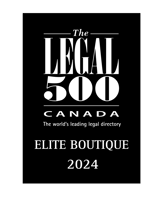

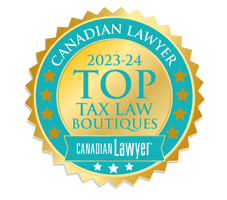
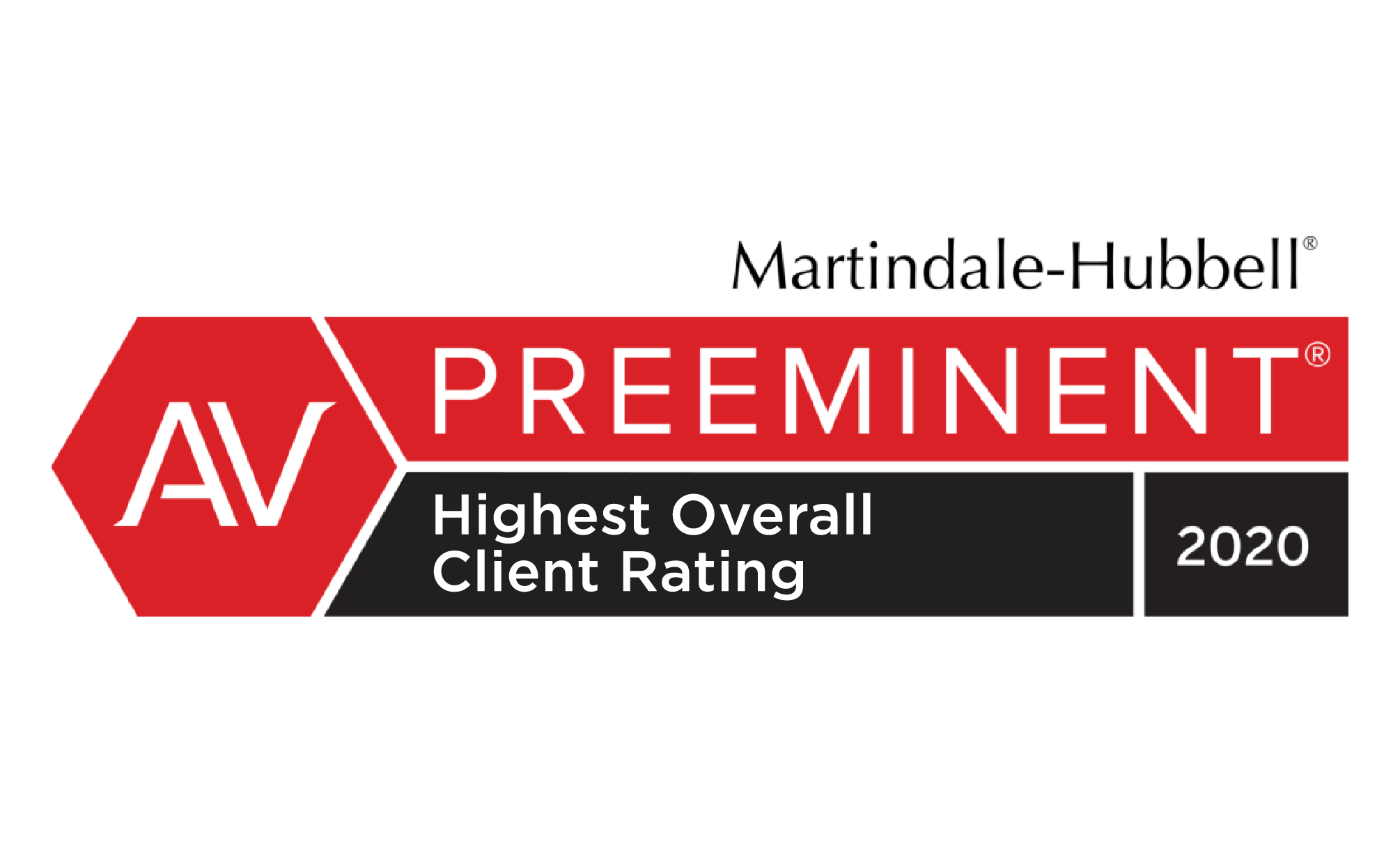
.png?width=1386&height=1224&name=ITR%20Tax%20Innovator%20Finalist%202024%20Award%20(Badge).png)

